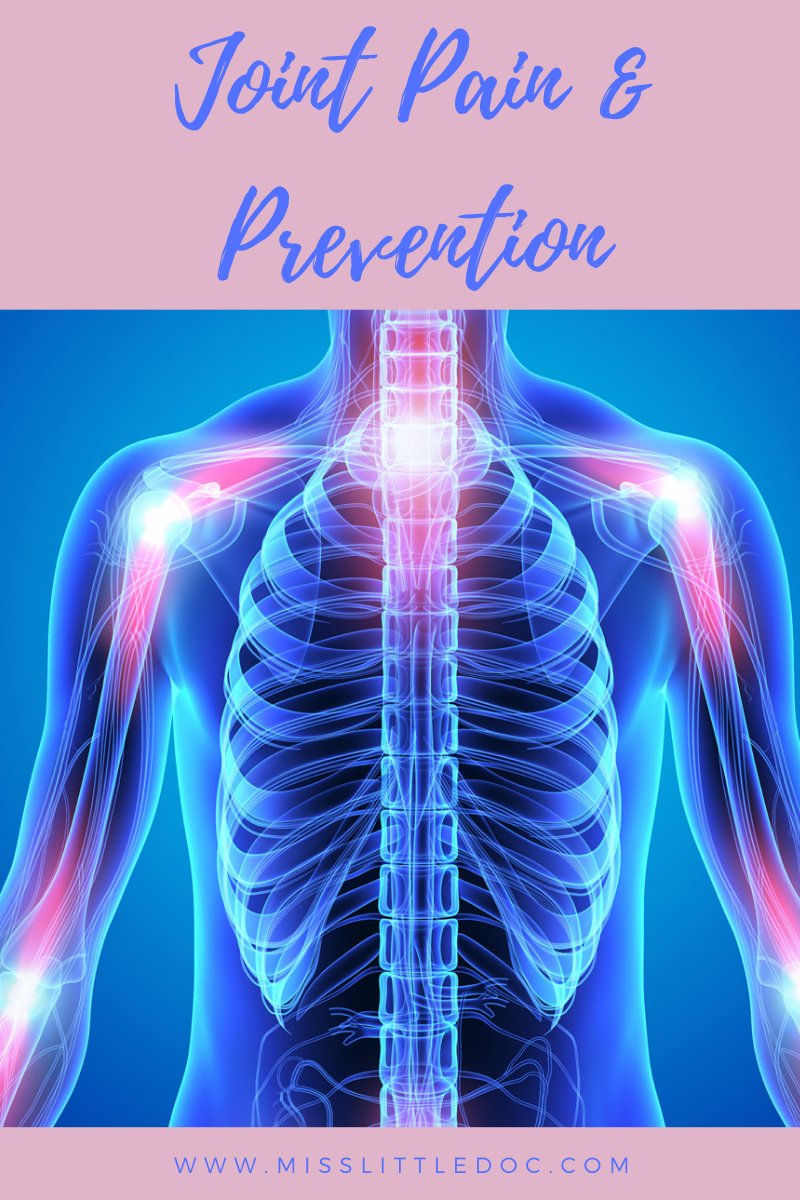Joint Pain and Prevention
Joint pain is often associated with arthritis and is noticed more often in the larger joints like the knee and shoulder joints. A joint is where two bones come together, so there are about 360 joints in the body. There are three main types of joints in the body: Fibrous, which are immoveable, Cartilagenous, which are partly moveable and Synovial, which is freely moveable.
Fibrous joints: are held together by a ligament. Such as a teeth being held in the jaw. The lower arm holds the radius and ulna together with a band, as well as, the tibia and fibula in the lower leg. The bones of your skull and pelvis are held together by fibrous joints.
Cartilagenous joints: occur where the connection between the bones are made up of cartilage. These joints allow for only a little movement, such as in the spine or ribs.
Synovial Joints: are by far the most common classification of joint within the human body. They are highly moveable and all have a synovial capsule surrounding the entire joint. There are 7 types: hinge, pivot, ball and socket, saddle, condyloid, gliding and ellipsoid.
How to protect your joints
Glucosamine is a natural compound found in cartilage, which is in between the joints. There are a few supplements that contain glucosamine. Glucosamine is derived from shells of shellfish or made in a lab. In our office we carry both glucosamine sulfate and glucosamine chondroitin.

In Europe glucosamine sulfate is given to treat osteoarthritis, but in the US, most doctors prefer a medication instead. (I believe because you don’t have to go to the doctor for a prescription of glucosamine.)
Research on glucosamine use for specific conditions shows:
- Osteoarthritis. Oral use of glucosamine sulfate might provide some pain relief for people with osteoarthritis of the knee. Some research shows that it may also help slow knee joint degeneration associated with osteoarthritis.
- Rheumatoid arthritis. Early research suggests that oral use of glucosamine hydrochloride might reduce pain related to rheumatoid arthritis.
Glucosamine sulfate functions are the primary building block for proteoglycans (large molecules in cartilage that give it buffering properties). It is absorbed into the system and can be traced to cartilage four hours after consumption and has been shown to have anti-inflammatory effects.
In some laboratory tests, the glucosamine supplement demonstrated a protective effect on the cartilage. These studies suggest that glucosamine sulfate may inhibit the breakdown of cartilage associated with osteoarthritis and may have the potential to help build-up cartilage.
Chondroitin sulfate is a larger molecule also found in cartilage. Chondroitin sulfate has been studied less, but early results show that it also seems to work as an anti-inflammatory and reduces pain. Some laboratory studies suggest that chondroitin sulfate may slow cartilage breakdown associated with osteoarthritis and even stimulate cartilage growth.
Chiropractic
Chiropractic care is much more than just a pain reliever, it helps your body function at its optimal level. The chiropractic adjustment resets the brain, which regulates all the hormones and essential nutrients in the body. It also boosts the immune system to help you feel your best. The adjustment helps realign joints which decreases your risk of developing arthritis or joint pain.
Maintenance care or once a month adjustments helps make sure that the body is moving optimally. Movement helps with blood flow, energy, and decreasing risk of degeneration. Adjustments can also help you sleep better, feel better and in turn when you feel better you can exercise and want to eat better!
Give us or a chiropractor near you a call to protect your joints. Investing a little bit of time and money now will save you on time, money and PAIN later on in life. An ounce of prevention is worth a pound of cure!
~Dr. Lacey~
Carder Chiropractic Clinic, INC.
El Reno, OK 73036



